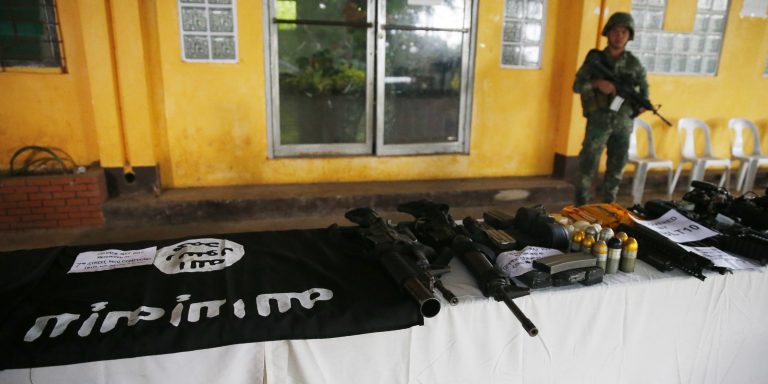INTELBRIEF
March 7, 2018
TSC IntelBrief: Islamic State in the Philippines

- On March 4, Philippine officials announced the arrest of an Islamic State member who played a large role in the recent fighting in Marawi.
- The scale of the fighting in Marawi, which took the Philippine military five months to reclaim, should be a wake-up call for future threats.
- Perhaps more so than any other southeast Asian country, the Philippines is exceedingly vulnerable to a metastasizing Islamic State.
- The country’s sprawling geography and historic tensions between locals and the central government will help the Islamic State establish a persistent presence in the Philippines.
One of the hardest fought battles against the so-called Islamic State in the last year was far from Iraq and Syria—where the group saw its stronghold toppled and was forced to revert from a proto-terror state back into a terror-insurgency. In the Philippines, the city of Marawi was the scene of an intense, five-month battle between the Philippine military and Islamic State fighters who seized control of the area.
Marawi exemplifies two elements of the current and future state of affairs concerning counterterrorism in the Philippines; neither is positive. First, the very fact that the Islamic State—a relatively new entity in Southeast Asia—could take control of an area the size of Marawi is troubling. The government said it killed approximately 800 Islamic State fighters in the battle for Marawi, which ended in late October 2017; a remarkable number of fighters for such an area. Likely there are still a sizable number that fled the area and who will continue to pose a threat for some time.
On March 4, Philippine police announced the arrest of Nasser Lomondot in Manila, an Islamic State member who fought in Marawi and tried to lead a counter-assault in the neighboring city of Marantao—an attempt to relieve pressure on Islamic State positions in Marawi. The geography of the country presents nearly insurmountable challenges to even the most effective counterterrorism military forces; groups can grow in relative isolation, as well as send operatives into Manila to conduct high-profile attacks—a combination that is difficult to counter.
Second, while the Philippine military and counterterrorism forces are quite capable in some respects, they struggled against the Islamic State for five months. This is understandable as it relates to counterterrorism since what was happening in Marawi was brutal urban warfare, far beyond terrorism. While the U.S. has spent billions in support and training to help bolster the Philippine military and counterterrorism forces, it appears there is still much to be done to build capacity, especially as the Islamic State will likely continue to dig into the area and attempt to plant roots.
In addition to geographic and military-capacity challenges is the reality that military force is not the most effective means to address the underlying conditions that allowed for the Islamic State to establish such a rapid and robust presence in the first place. A heavy-handed security response will only serve to further distance local populations from the central government. The rhetoric of Muslim persecution in the predominately Catholic country will find an even wider audience, an audience that will continue to grow with sweeping crackdowns that create more problems than they solve. As with nearly all aspects of counterterrorism, the most effective and lasting measures are those developed locally with a light-touch and that are supported by the central government. The Philippines will continue to face this challenge for the foreseeable future.
.
For tailored research and analysis, please contact: info@thesoufancenter.org
[video width="960" height="540" mp4="https://thesoufancenter.org/wp-content/uploads/2018/03/Final-Edit-1-145.mp4" poster="https://thesoufancenter.org/wp-content/uploads/2018/03/AP_17150490332119.jpg"][/video]